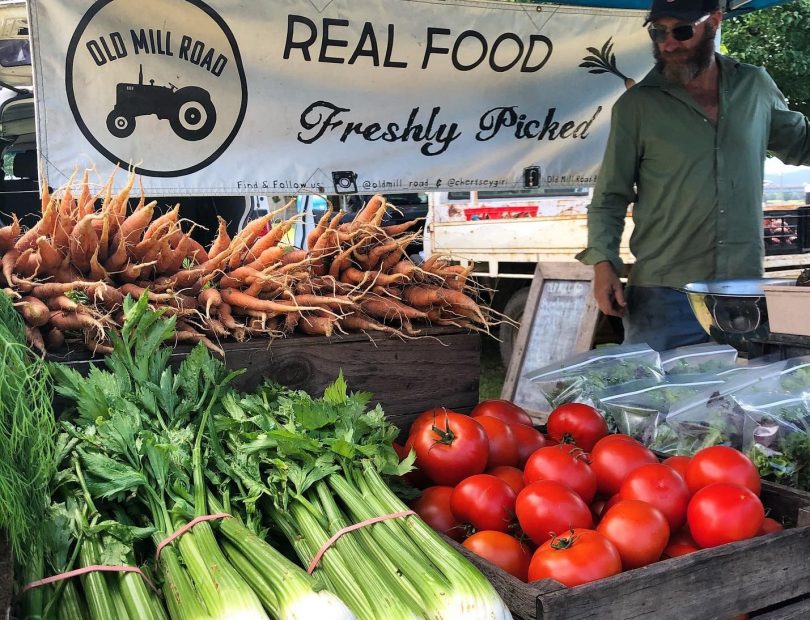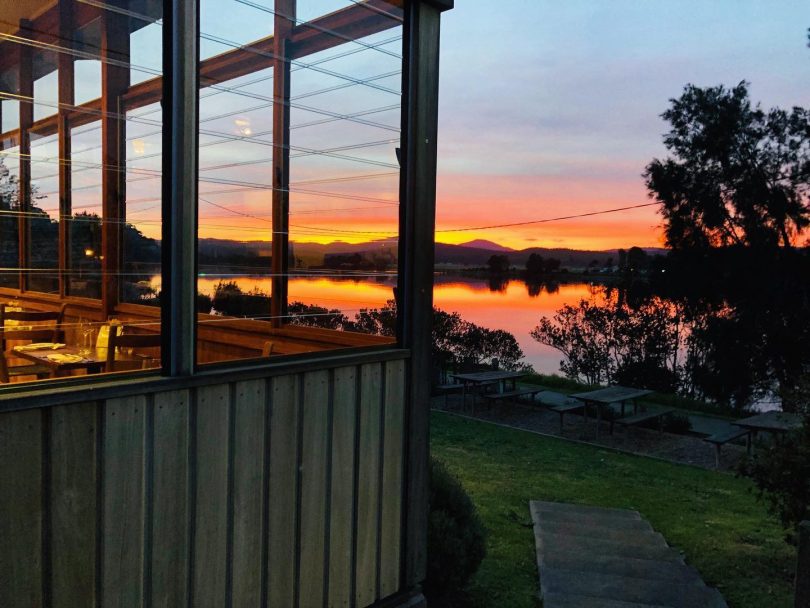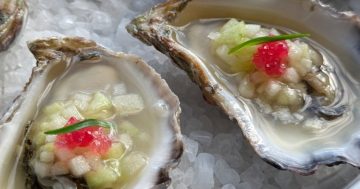
Architect and artist Stuart Whitelaw. Photo: Jan Maitland.
There are people who talk of their grand aspirations to make the world a better place, and then there are those who quietly work on projects that become catalysts for significant change.
Eurobodalla architect Stuart Whitelaw is the latter.
Stuart’s modesty hides the significance of his collaborative work that has resulted in a quiet food revolution, with the growth of market gardening, an award-winning farmers market and a hatted restaurant on the South Coast, long before anyone had heard of Paul West or the River Cottage.
Torn between his twin passions of designing environmentally sensitive buildings and being a full-time artist, Stuart studied both art and architecture at the University of Sydney. Greatly influenced by many of his art teachers, including Lloyd Rees, on graduating in architecture in 1969, Stuart chose both, working as a tutor in design and art.
“I was looking forward to the art part as my ‘boss’ would be Lloyd Rees. Design tutoring promised to be a mystery because there was a new head of first-year design,” Stuart said.
The mystery man turned out to be American-born sculptor, architecture lecturer and, some may say, disruptor Marr Grounds.
“Marr and I got on well, and I went with him to a very large coastal property on the Far South Coast known as Penders owned by Marr’s father, Sir Roy Grounds, and Ken Myer (of the Myer department stores),” Stuart recalled.
“We had an exciting time on these visits, installing primary coloured steel sculptures by Emanuel Raft in the heathland, building a geodesic dome, hanging out in Roy’s barn and making environmental art installations.”
Penders is now part of Mimosa Rocks National Park.

Passionate about local food security and production, Stuart played a part in creating SAGE Farmers Market in Moruya. Photo: SAGE Farmers Market Facebook.
In 1975 Stuart and his wife Christine started a small gallery on the outskirts of Sydney where he was able to pursue his art practice before being tempted back into architecture.
After two decades of practice, Stuart resigned from his successful architecture firm in north western Sydney and moved to an acreage in Bingie 15 km south of Moruya.
“Our family had holidayed on the South Coast for many years, so when the opportunity came up to buy a bushland acreage we moved quickly. Making the permanent move took a little longer but, once we were here, that was it,” Stuart said.
After completing their new home amongst the casuarinas near Mullimburra Point, Stuart’s focus turned to Moruya where a slow food movement had begun along with a community garden project.
His enthusiasm for reclaiming a place in the food system for small scale and localised food production helped begin the not-for-profit SAGE Project in 2008 and gave birth to the SAGE Farmers market in 2013. Held every Tuesday at Riverside Park in Moruya, the market has twice won the Delicious Magazine Outstanding Farmers Market award.
Not one to stand still, in 2007 Stuart purchased an old weatherboard cottage in town on a long block leading down to the riverfront. He swears the land spoke to him and in his words, “demanded a restaurant on the site”. And so began what Stuart describes as some of the most exhausting and challenging years of his life constructing, managing and at one stage running The River restaurant in Moruya.
Despite the trials and tribulations of getting a European influenced, modern Australian restaurant to work in a region more used to judging a meal by the volume of food on a plate, Stuart’s vision of dining at sunset by the river overlooking the mountains is now a special treat for locals and visitors alike.

River Restaurant Moruya. Photo: The River Restaurant Facebook.
Over the years, Stuart has sat on local advisory boards and committees, prepared to take a stand on concepts important to him, including at one point a resignation from Eurobodalla Shire Council’s Rural Lands Steering Committee when the committee voted to remove the words ‘land stewardship’ from the document and replace them with ‘land ownership’.
One yet-to-be-realised dream is for Moruya to fully embrace its river frontage. He says the historically large and sometimes damaging floods are one reason the townscape has not engaged with the river.
“Although Moruya is a river town, it has effectively excluded the river from its shopping area and spaces that people use on a day-to-day basis,” Stuart said.
Stuart had some early input into the concept design of Moruya’s Riverside Park, previously a council campground.
Now hosting two weekly markets, the park, by the river in town, has become a well-used place for recreation and leisure for locals and visitors. Seeing more potential in the site, Stuart designed a pavilion with the potential to be a major tourist drawcard as well as a venue for the community.
“The pavilion concept was born out of the Riverlights event held as part of the inaugural Granite Town Festival in 2014. This single event, which attracted between three and four thousand people to the banks of the Moruya River, demonstrated so clearly that we have been turning our backs on the lifeblood of our town for too long,” Stuart said.
As the park is in a floodway, Stuart recognised the structure would need to be designed to the same standard as a road bridge, and used the constraints of the site to be an integral part of the design.
His proposal is for a pavilion in the form of an upturned boat, echoing bark canoes, clinker rowboats, granite barges and coastal steamers. Co-designed with a consulting structural and civil engineer with many years experience in bridge design, floating debris in times of flood would glance off its ‘gunwales’.

Stuart Whitelaw’s concept drawing for a flood engineered pavilion in Riverside Park by the Moruya river. Image: Stuart Whitelaw.
Stuart says the pavilion could be used as a shelter for the markets, for festivals and private functions.
“You can imagine the possibilities, the place is crying out for an all-weather event space for music events or weddings, we could enjoy our stunning riverside more.
“But the council could not see past the floodway restrictions, despite pointing out that a similarly well engineered bridge just 500 metres away withstood those same flood risks,” Stuart sighed.
Stuart has continued to paint and draw throughout his architectural career and, on retiring in 2011, his art took a larger part in his life. Preferring to spend most of his time painting outdoors, drawing inspiration from the bush and the ocean within a short walk of home, Stuart’s distinctive pastel and acrylic works are regularly displayed in local exhibitions.
Committed to his community, Stuart still works with SAGE pressing for local food security, and still dares just a whisper of a dream to restoring what he calls “a sense of civic pride” in the public buildings and streetscapes of the historic river town he loves.
Stuart Whitelaw’s latest exhibition ‘Walking with Canvas’ is now open for viewing in Gallery Bodalla until Sunday 5 December. For opening times or to view the exhibition online visit Bodalla Gallery.









